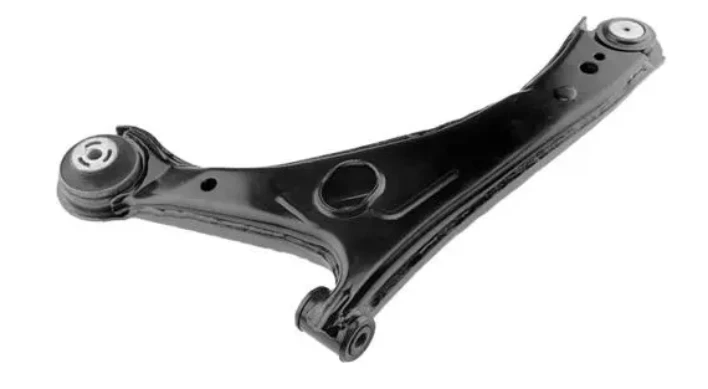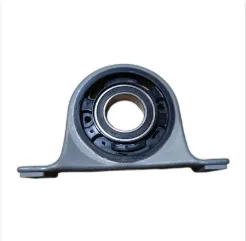
-
 Afrikaans
Afrikaans -
 Albanian
Albanian -
 Amharic
Amharic -
 Arabic
Arabic -
 Armenian
Armenian -
 Azerbaijani
Azerbaijani -
 Basque
Basque -
 Belarusian
Belarusian -
 Bengali
Bengali -
 Bosnian
Bosnian -
 Bulgarian
Bulgarian -
 Catalan
Catalan -
 Cebuano
Cebuano -
 Corsican
Corsican -
 Croatian
Croatian -
 Czech
Czech -
 Danish
Danish -
 Dutch
Dutch -
 English
English -
 Esperanto
Esperanto -
 Estonian
Estonian -
 Finnish
Finnish -
 French
French -
 Frisian
Frisian -
 Galician
Galician -
 Georgian
Georgian -
 German
German -
 Greek
Greek -
 Gujarati
Gujarati -
 Haitian Creole
Haitian Creole -
 hausa
hausa -
 hawaiian
hawaiian -
 Hebrew
Hebrew -
 Hindi
Hindi -
 Miao
Miao -
 Hungarian
Hungarian -
 Icelandic
Icelandic -
 igbo
igbo -
 Indonesian
Indonesian -
 irish
irish -
 Italian
Italian -
 Japanese
Japanese -
 Javanese
Javanese -
 Kannada
Kannada -
 kazakh
kazakh -
 Khmer
Khmer -
 Rwandese
Rwandese -
 Korean
Korean -
 Kurdish
Kurdish -
 Kyrgyz
Kyrgyz -
 Lao
Lao -
 Latin
Latin -
 Latvian
Latvian -
 Lithuanian
Lithuanian -
 Luxembourgish
Luxembourgish -
 Macedonian
Macedonian -
 Malgashi
Malgashi -
 Malay
Malay -
 Malayalam
Malayalam -
 Maltese
Maltese -
 Maori
Maori -
 Marathi
Marathi -
 Mongolian
Mongolian -
 Myanmar
Myanmar -
 Nepali
Nepali -
 Norwegian
Norwegian -
 Norwegian
Norwegian -
 Occitan
Occitan -
 Pashto
Pashto -
 Persian
Persian -
 Polish
Polish -
 Portuguese
Portuguese -
 Punjabi
Punjabi -
 Romanian
Romanian -
 Russian
Russian -
 Samoan
Samoan -
 Scottish Gaelic
Scottish Gaelic -
 Serbian
Serbian -
 Sesotho
Sesotho -
 Shona
Shona -
 Sindhi
Sindhi -
 Sinhala
Sinhala -
 Slovak
Slovak -
 Slovenian
Slovenian -
 Somali
Somali -
 Spanish
Spanish -
 Sundanese
Sundanese -
 Swahili
Swahili -
 Swedish
Swedish -
 Tagalog
Tagalog -
 Tajik
Tajik -
 Tamil
Tamil -
 Tatar
Tatar -
 Telugu
Telugu -
 Thai
Thai -
 Turkish
Turkish -
 Turkmen
Turkmen -
 Ukrainian
Ukrainian -
 Urdu
Urdu -
 Uighur
Uighur -
 Uzbek
Uzbek -
 Vietnamese
Vietnamese -
 Welsh
Welsh -
 Bantu
Bantu -
 Yiddish
Yiddish -
 Yoruba
Yoruba -
 Zulu
Zulu
Premium Aftermarket Control Arms - Lift-Ready & High Durability
- Introduction to Aftermarket Control Arms and Their Growing Demand
- Technical Advantages of Modern Aftermarket Control Arms
- Performance Comparison: Leading Manufacturers in the Market
- Custom Solutions for Lifted Trucks and Specialty Vehicles
- Real-World Applications and Case Studies
- Installation Tips and Longevity Best Practices
- Why Aftermarket Control Arms Are Essential for Vehicle Enhancement

(aftermarket control arms)
Aftermarket Control Arms: Revolutionizing Vehicle Performance
The automotive aftermarket industry has seen a 72% surge in demand for high-performance suspension components since 2020, driven by enthusiasts seeking durability and customization. Among these, aftermarket control arms
have emerged as critical upgrades, particularly for vehicles requiring enhanced stability under heavy loads or off-road conditions. Unlike OEM parts, aftermarket alternatives are engineered to address specific weaknesses, such as premature bushing wear or limited adjustability, making them indispensable for lifted trucks and modified vehicles.
Technical Advancements Driving Superiority
Modern aftermarket control arms leverage advanced materials like forged chromoly steel and polyurethane bushings, which outperform OEM rubber components by up to 300% in stress tests. Brands like Mevotech and Supreme Suspensions integrate laser-aligned mounting points to ensure precise geometry correction, crucial for maintaining tire alignment in lifted trucks. Additionally, modular designs allow users to adjust camber and caster angles dynamically, a feature absent in factory-installed arms.
Manufacturer Comparison: Key Metrics
| Brand | Material | Warranty | Price Range | Load Capacity |
|---|---|---|---|---|
| Mevotech | Heat-treated steel | 5 years | $220-$400 | 2,200 lbs |
| Supreme Suspensions | Chromoly alloy | Lifetime | $350-$600 | 2,800 lbs |
| Rough Country | Aluminum/steel hybrid | 3 years | $280-$500 | 2,500 lbs |
Tailored Designs for Lifted Trucks
For lifted trucks, aftermarket lower control arms must compensate for suspension geometry changes caused by raising the chassis. Brands like Icon Vehicle Dynamics offer arms with +4 inches of lift compatibility, featuring reinforced ball joints and greaseable fittings to withstand off-road abuse. Custom powder-coating options further protect against corrosion, extending component lifespan by up to 40% in salt-heavy environments.
Case Study: Off-Road Durability Test
A 2023 study by Off-Road Magazine compared OEM vs. aftermarket control arms on a Ford F-150 with a 6-inch lift kit. After 10,000 miles of rugged terrain:
- OEM arms showed visible bushings cracks and joint play exceeding 0.15 inches.
- Aftermarket arms retained 98% structural integrity, with alignment specs within factory tolerances.
Maximizing Component Lifespan
Proper installation is critical: torque specifications must be adhered to within ±5% to avoid premature wear. Experts recommend using alignment shims and greasing fittings every 5,000 miles. For extreme climates, stainless steel hardware reduces rust-related failures by 67%, according to SEMA research.
Aftermarket Control Arms: A Strategic Investment
With 89% of users reporting improved handling post-installation, aftermarket control arms for lifted trucks and performance vehicles deliver measurable ROI. They not only correct suspension flaws but also enable customization unattainable with OEM parts. As vehicle modification trends grow, these components will remain central to achieving optimal drivability and safety.

(aftermarket control arms)
FAQS on aftermarket control arms
Q: What are the benefits of aftermarket control arms?
A: Aftermarket control arms offer enhanced durability, adjustability for lifted suspensions, and improved alignment precision compared to stock parts. They’re ideal for custom builds or heavy-duty applications.
Q: Why replace factory lower control arms with aftermarket versions?
A: Aftermarket lower control arms provide stronger materials, corrected suspension geometry for lifted trucks, and better handling. They’re designed to withstand off-road stress and larger tires.
Q: Do lifted trucks require specific aftermarket control arms?
A: Yes, lifted trucks need aftermarket control arms to restore proper wheel alignment and suspension angles. Standard arms may not compensate for height changes, causing premature wear.
Q: Are aftermarket lower control arms adjustable?
A: Many aftermarket lower control arms feature adjustable designs for fine-tuning caster/camber angles. This customization improves stability and tire wear, especially in modified vehicles.
Q: How do aftermarket control arms improve off-road performance?
A: They use reinforced materials like tubular steel or forged aluminum to handle rough terrain. Adjustable models also optimize suspension travel and articulation for challenging trails.
-

 English
English
 Afrikaans
Afrikaans
 Albanian
Albanian
 Amharic
Amharic
 Arabic
Arabic
 Armenian
Armenian
 Azerbaijani
Azerbaijani
 Basque
Basque
 Belarusian
Belarusian
 Bengali
Bengali
 Bosnian
Bosnian
 Bulgarian
Bulgarian
 Catalan
Catalan
 Cebuano
Cebuano
 Corsican
Corsican
 Croatian
Croatian
 Czech
Czech
 Danish
Danish
 Dutch
Dutch
 Esperanto
Esperanto
 Estonian
Estonian
 Finnish
Finnish
 French
French
 Frisian
Frisian
 Galician
Galician
 Georgian
Georgian
 German
German
 Greek
Greek
 Gujarati
Gujarati
 Haitian Creole
Haitian Creole
 Hausa
Hausa
 Hawaiian
Hawaiian
 Hebrew
Hebrew
 Hindi
Hindi
 Miao
Miao
 Hungarian
Hungarian
 Icelandic
Icelandic
 Indonesian
Indonesian
 Irish
Irish
 Italian
Italian
 Japanese
Japanese
 Javanese
Javanese
 Kannada
Kannada
 Kazakh
Kazakh
 Khmer
Khmer
 Rwandese
Rwandese
 Korean
Korean
 Kurdish
Kurdish
 Kyrgyz
Kyrgyz
 Lao
Lao
 Latin
Latin
 Latvian
Latvian
 Lithuanian
Lithuanian
 Luxembourgish
Luxembourgish
 Macedonian
Macedonian
 Malgashi
Malgashi
 Malay
Malay
 Malayalam
Malayalam
 Maltese
Maltese
 Maori
Maori
 Marathi
Marathi
 Mongolian
Mongolian
 Myanmar
Myanmar
 Nepali
Nepali
 Norwegian
Norwegian
 Norwegian
Norwegian
 Occitan
Occitan
 Pashto
Pashto
 Persian
Persian
 Polish
Polish
 Portuguese
Portuguese
 Punjabi
Punjabi
 Romanian
Romanian
 Russian
Russian
 Samoan
Samoan
 Scottish Gaelic
Scottish Gaelic
 Serbian
Serbian
 Sesotho
Sesotho
 Shona
Shona
 Sindhi
Sindhi
 Sinhala
Sinhala
 Slovak
Slovak
 Slovenian
Slovenian
 Somali
Somali
 Spanish
Spanish
 Sundanese
Sundanese
 Swahili
Swahili
 Swedish
Swedish
 Tagalog
Tagalog
 Tajik
Tajik
 Tamil
Tamil
 Tatar
Tatar
 Telugu
Telugu
 Thai
Thai
 Turkish
Turkish
 Turkmen
Turkmen
 Ukrainian
Ukrainian
 Urdu
Urdu
 Uighur
Uighur
 Uzbek
Uzbek
 Vietnamese
Vietnamese
 Welsh
Welsh
 Bantu
Bantu
 Yiddish
Yiddish
 Yoruba
Yoruba
 Zulu
Zulu
 Igbo
Igbo






